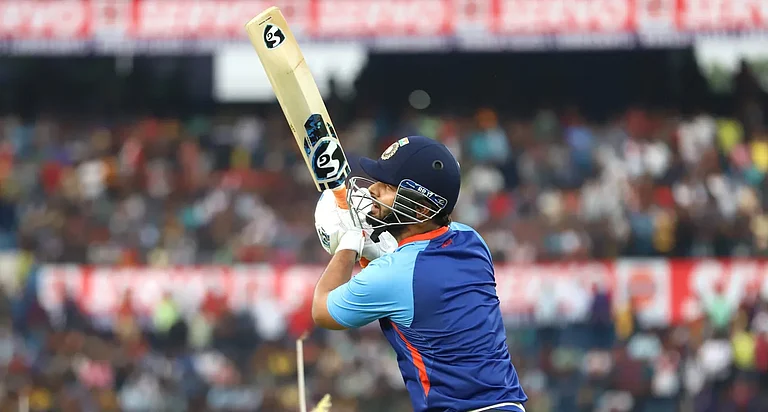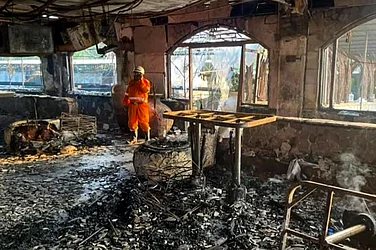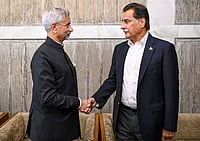While there is no accurate estimate of India’s population of disabled persons because all surveys only capture a part of the population, the 2011 census estimated that the number of people with disabilities in India is close to 2.68 crores (or 2.2 per cent of the population) — that is more than the entire population of Australia.
India has adopted a host of measures for people with disabilities, including signing and ratifying international conventions such as the United Nations Convention on the Rights of Persons with Disabilities (UNCRPD) and the Incheon Strategy and passing laws including The Rights Of Persons with Disabilities Act 2016, people with disabilities continue to remain restricted in terms of access to buildings, education, healthcare and other rights.
Unmet targets
The government launched the Accessible India Campaign in 2015 to achieve universal accessibility for persons with disabilities in the built environment (buildings), transport system and communication technology ecosystem. However, the extension of deadlines has delayed the fulfilment of these goals.
The deadline to make all services accessible elapsed in 2019 and to make all public places accessible passed on June 15, 2022. Rather than taking strict action on non-compliance, the highest policy-making body (Central Advisory Board, CAB) on disability considered granting an extension to states on accessibility until March 2024. The reason for the failure of AIC is the absence of monitoring and assessment of accessibility indicators, a report by The Wire said.
In response to a question by Nationalist Congress Party MP Vandana Chavan on February 9, 2022, 48.5% of the State/Union Territory government buildings had been made accessible, as against the target of 50%, according to the data showed by Social Justice and Empowerment Ministry to the Rajya Sabha.
Only 8.73% of government-owned buses were fully accessible, as against the target of 25%. Of the 1.41 lakh buses, 30% were “partially accessible”, the reply stated, citing information from the Ministry of Road Transport and Highways.
Further, the target was to make at least 50% of Central and State government sites meet accessibility standards. The Ministry’s reply said out of the 917 State/Union Territory government sites, 603 had been made accessible.
The construction of the new parliament building too raised concerns about accessibility. The debate ignited after former prime minister Dr Manmohan Singh was designated a seat in the last row of Rajya Sabha as it was difficult to bring his wheelchair to the front row.
Dr Satendra Singh, a disability rights activist and founder of the Doctors with Disabilities group, had said that as per the Accessible India campaign, many audits are happening but unless a person is a wheelchair user, their needs are not understood properly, PTI reported.
In terms of education too, lack of inclusive facilities inside educational institutions has forced some kids out of school. Out of 78.64 lakh children with disability in India, three-fourths of those aged five years don’t attend any educational institution, according to a 2019 UNESCO report. Moreover, 12% of the children with disability have dropped out of school and 27% of children with disability have never attended any educational institution, the report also says.
A 2019 report by a Samarthyam NGO found that schools in Hyderabad didn’t have accessible toilets and entrances, information and communication systems, accessible routes and drinking water facilities, and ramps. The study also found that infrastructure in schools was considered unsafe for children with disability due to lack of awareness about access standards among construction personnel.
Disability laws in India
India’s disability rights law - the Rights of Persons with Disabilities Act, 2016 does provide a host of rights including free healthcare, barrier-free access to healthcare and priority in delivering healthcare services to those with disabilities and inclusion in academic and social development among others. However, research by several activists and think tanks has shown that these rights have remained on paper.
The existing laws that govern education for persons with disabilities aren’t clear. The Rights of Persons with Disabilities Act 2016 states that educational institutes should “provide reasonable accommodation according to the individual’s requirements and provide the necessary support, individualised or otherwise, in environments that maximise academic and social development consistent with the goal of full inclusion.”
A review in May 2020 by the Vidhi Centre for Legal Policy found that these terms, ‘reasonable accommodation’, ‘individualised support’ and ‘full inclusion’ haven’t been elaborated, leaving room for arbitrary implementation.
In terms of healthcare too, the think-tank found that out of 146 respondents who responded to the question on accessibility to healthcare services during the Covid-19 pandemic, 33.5% stated that they found such services inaccessible during the pandemic.
Keeping in line with its promises, the centre released the Draft National Policy for Persons with Disabilities which identifies various areas for intervention in 2022. Disability rights activists and organisations like the National Platform for the Rights of the Disabled (NPRD) welcomed the details of the draft.
But they also expressed disappointment that after a 15-year wait since India signed the United Nations Convention on Rights of Persons with Disabilities (UNCRPD), the policy document didn't address the issues of disabled people in the country.
"However, coming after a 15-year long wait since India signed the United Nations Convention on Rights of Persons with Disabilities (UNCRPD), much more was expected from a policy document that seeks to address issues of one of the most marginalized sections of our society. Especially so, since the review of the 2006 policy that was to be undertaken after a period of five years didn’t take place," they said in a statement.
The NPRD highlighted how the draft attempted to admit the reduced budgetary allocations towards persons with disabilities but didn't include anything to help the situation.
"However, it does not do so, even while implementation of the mandates of the RPD Act would require substantial allocations. No increase in the Centre's contribution towards disability pension is recommended, which continues to be at a pittance of Rs 300/month," they said in their statement.
While India has made some progress with regard to the inclusion of disabled persons, most promises and policies still remain to be implemented.


























